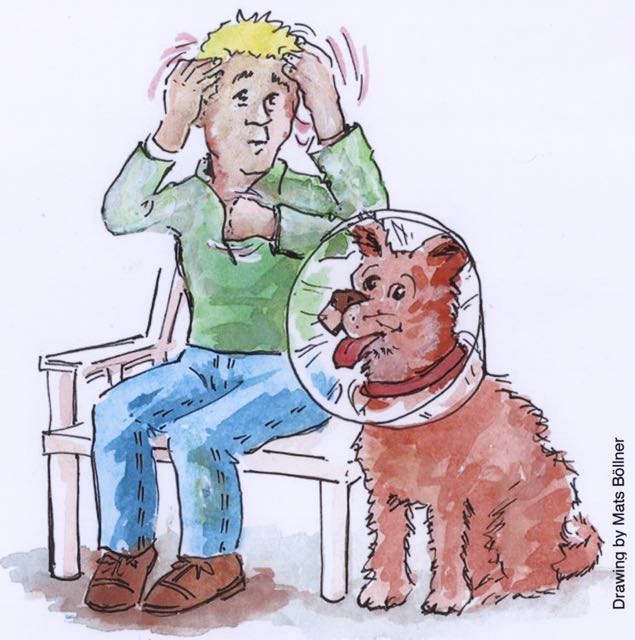Atopic eczema, behaviour and habit reversal
With permission from Peter Norén
Behavioural medicine is a liaison speciality, between psychology and medicine. Within medicine, some specialities are more active in this liaison than others. Today a search on the internet under “behavioural cardiology” produced 2,370 results in 0.55 of a second, while the search under “behavioural dermatology” gave 251 results in 0.23 of a second.
And not only does behavioural dermatology give a tenth of the results that cardiology gives. Most of the dermatology results refer to veterinary dermatology, not dermatology of humans! Which reminds me that the clinical students on dermatology rounds at our hospital sometimes include veterinary students.
There is a considerable overlap between the skin conditions affecting humans and those that affect the patients of the veterinary surgeon. Peter Norén has had the drawing above made by Mats Böllner to show how effective a mechanical restraint is when dealing with eczema on the head and neck of a dog. Without the special protective collar, scratching makes healing impossible. With the collar, scratching the skin of the head and neck is prevented, topical treatments work optimally and complete healing can be achieved.
We are not however impressed by the usefulness of mechanical restraints applied to humans. There are many on the market. Anti-scratch clothing for babies and infants seem a good idea at first, until it becomes clear that such clothing does not protect, so much as provide a means for rubbing rather than scratching. And rubbing leads to chronic eczema and lichenification exactly as scratching does.
Habit reversal training is the solution for humans. Adults and older children can understand this and learn how to use it for themselves without much difficulty. Younger children, infants and babies need their parents to help them.
See also
